WOW
SLOW TRAVEL
52 CITIES
1 WEEK
EACH CITY
52 WEEKS

Malaysia and Singapore
Malaysia and Singapore are two neighboring countries located in Southeast Asia, each with its own unique culture, history, and attractions. Here’s an overview of both countries:
Malaysia:
Geography: Malaysia is divided into two main regions: Peninsular Malaysia (located on the Malay Peninsula) and East Malaysia (on the island of Borneo). The country boasts diverse landscapes, including rainforests, mountains, beautiful beaches, and islands.
Culture: Malaysia is known for its multicultural society, with influences from Malay, Chinese, Indian, and indigenous cultures. This diversity is reflected in its food, festivals, and traditions. The official religion is Islam.
Cities: Kuala Lumpur, the capital, is a bustling metropolis known for its modern skyline, including the iconic Petronas Twin Towers. Other major cities include Penang, known for its historical and cultural heritage, and Johor Bahru, located near Singapore.
Tourist Attractions: Malaysia offers a wide range of attractions, such as UNESCO-listed George Town in Penang, the Cameron Highlands, pristine islands like Langkawi, and national parks like Taman Negara. Wildlife enthusiasts can also visit orangutan sanctuaries in Borneo.
Food: Malaysian cuisine is renowned for its diverse and flavorful dishes, including nasi lemak, laksa, roti canai, and satay. The country is a food paradise with street food stalls, hawker centers, and restaurants offering a rich culinary experience.
Language: Malay (Bahasa Malaysia) is the official language, but English is widely spoken, especially in urban areas.
Economy: Malaysia has a thriving economy, driven by manufacturing, services, and natural resources. It’s one of the leading countries in Southeast Asia in terms of economic development.
Retirement: Malaysia has become an attractive destination for retirees, offering a lower cost of living compared to Western countries, modern healthcare facilities, and a “Malaysia My Second Home” (MM2H) program that allows foreigners to retire in Malaysia.
Singapore:
Geography: Singapore is a city-state located at the southern tip of the Malay Peninsula. Despite its small size, it’s known for its modernity and economic prowess.
Culture: Singapore is a melting pot of cultures, with influences from Chinese, Malay, Indian, and Western traditions. It’s a highly diverse and cosmopolitan society.
Cityscape: The city of Singapore is known for its futuristic architecture, including landmarks like Marina Bay Sands and the Gardens by the Bay. The city is a global financial hub and a center for commerce and technology.
Food: Singapore is famous for its street food, known locally as hawker food. Dishes like Hainanese chicken rice, chili crab, and laksa are must-tries. The city is often called a “food paradise.”
Language: English, Malay, Chinese (Mandarin), and Tamil are the official languages, with English being the primary language of communication.
Economy: Singapore boasts one of the most developed and prosperous economies in the world, driven by finance, trade, technology, and tourism.
Tourism: Tourists are drawn to Singapore for its shopping districts, cultural attractions like Chinatown and Little India, and family-friendly destinations like Universal Studios and the Singapore Zoo.
Retirement: While Singapore is an attractive place for expatriates to work, retiree-specific visa programs are limited. The high cost of living may also be a consideration for retirees.
Both Malaysia and Singapore offer unique experiences and attractions. Malaysia is known for its natural beauty, cultural diversity, and lower cost of living, making it an appealing destination for retirees. Singapore, on the other hand, is a global city known for its modernity, economic opportunities, and cultural richness, making it attractive for working professionals and expatriates. Your choice between the two will depend on your lifestyle, preferences, and objectives
Malaysia is becoming an increasingly popular retirement destination for Americans due to its affordable cost of living, diverse culture, and beautiful landscapes. Here are some of the best cities and areas to consider for retirement in Malaysia:
George Town, Penang: George Town, the capital of Penang Island, is a UNESCO World Heritage Site known for its rich history, cultural diversity, and beautiful architecture. The city offers a blend of modern amenities and a laid-back lifestyle. It’s a popular choice for retirees due to its vibrant expatriate community, affordable healthcare, and delicious food.
Kuala Lumpur: Malaysia’s capital city, Kuala Lumpur, offers a cosmopolitan lifestyle with modern conveniences. While it’s more urban and bustling than some other options, it provides excellent healthcare facilities, a variety of international cuisine, and a range of cultural attractions. Kuala Lumpur has various expat-friendly neighborhoods like Bangsar and Mont Kiara.
Penang Island: Beyond George Town, Penang Island offers a range of beachfront and hillside areas that are popular with retirees. Batu Ferringhi is known for its beach resorts, while areas like Tanjung Bungah and Balik Pulau offer a quieter lifestyle.
Ipoh: Located in the state of Perak, Ipoh is known for its charming old town, colonial architecture, and delicious street food. The city offers a relaxed pace of life and a lower cost of living compared to Kuala Lumpur and Penang.
Langkawi: Langkawi is an archipelago known for its stunning beaches and natural beauty. It’s a duty-free zone, making it an attractive choice for retirees looking to stretch their budget. Langkawi offers a serene and idyllic environment.
Melaka (Malacca): Melaka, another UNESCO World Heritage city, is known for its historical sites, including Dutch and Portuguese colonial remnants. It’s a smaller city with a relaxed atmosphere, making it suitable for retirees seeking a quiet lifestyle.
Johor Bahru: Johor Bahru, located near Singapore, offers a more affordable cost of living than its neighbor across the border. It’s an option for retirees who want proximity to Singapore’s amenities while enjoying a more affordable lifestyle.
Kuching, Sarawak: Located on the island of Borneo, Kuching is the capital of Sarawak. It offers a unique blend of modernity and natural beauty. The city is known for its diverse culture, including indigenous cultures, and is a gateway to exploring the rainforests of Borneo.
When considering retirement in Malaysia, it’s essential to understand visa requirements and regulations for retirees. Malaysia offers the “Malaysia My Second Home” (MM2H) program, which allows foreigners to live in the country on a long-term visa. Consulting with MM2H agents and local authorities can provide valuable guidance for planning your retirement in Malaysia. Additionally, visiting potential retirement destinations to assess their suitability for your lifestyle and preferences is recommended
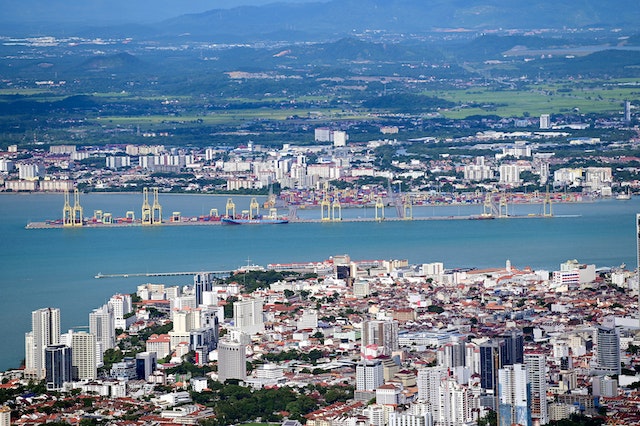
George Town
George Town, the capital city of Penang, is a vibrant and culturally rich destination in Malaysia. It’s known for its historical significance, diverse heritage, and unique architectural charm. Here are some key details and highlights of George Town:
UNESCO World Heritage Site: In 2008, George Town was designated as a UNESCO World Heritage Site for its well-preserved historical and cultural heritage. The city is home to a fascinating mix of colonial-era buildings, Chinese shophouses, Indian temples, and Malay mosques.
Cultural Diversity: George Town is celebrated for its cultural diversity, with influences from the Malay, Chinese, Indian, and British communities. This rich tapestry of cultures is reflected in the city’s festivals, food, and traditions.
Architecture: The city’s architecture is a highlight, with colorful and ornate shophouses, colonial-era mansions, and historical landmarks such as Fort Cornwallis. The street art scene, featuring murals and installations by local and international artists, adds to the city’s charm.
Street Food: Penang, and particularly George Town, is renowned for its street food. The city is often considered the “Food Capital of Malaysia.” You can savor dishes like char kway teow, laksa, nasi kandar, and cendol at hawker stalls and local eateries.
Temples and Mosques: George Town boasts a multitude of temples, mosques, and churches. Some of the notable ones include Kek Lok Si Temple, Kapitan Keling Mosque, and St. George’s Church.
Markets: The city has vibrant markets, including the Chowrasta Market and Little India, where you can shop for fresh produce, textiles, spices, and souvenirs.
Cultural Festivals: George Town hosts various cultural events and festivals throughout the year, such as Chinese New Year, Thaipusam, and the George Town Festival, which celebrates the city’s arts and culture.
Museums: There are several museums in George Town, including the Penang Museum and Art Gallery, which offer insights into the history and culture of Penang and Malaysia.
Accommodation: The city provides a range of accommodation options, from boutique hotels and heritage properties to modern resorts. You can choose accommodations that suit your style and budget.
Transportation: George Town is a walkable city, and many attractions are within walking distance of each other. The city also has a public bus system and is served by Penang International Airport.
Retirement: George Town’s cultural diversity, rich history, and relaxed lifestyle make it an attractive destination for retirees seeking a unique and engaging retirement experience in Southeast Asia. The city has a welcoming expatriate community, and the cost of living is reasonable.
Before considering George Town for retirement or an extended stay, it’s essential to understand visa requirements and regulations for retirees in Malaysia, such as the Malaysia My Second Home (MM2H) program. Consulting with MM2H agents and local authorities can provide valuable guidance for planning your retirement in George Town or elsewhere in Malaysia
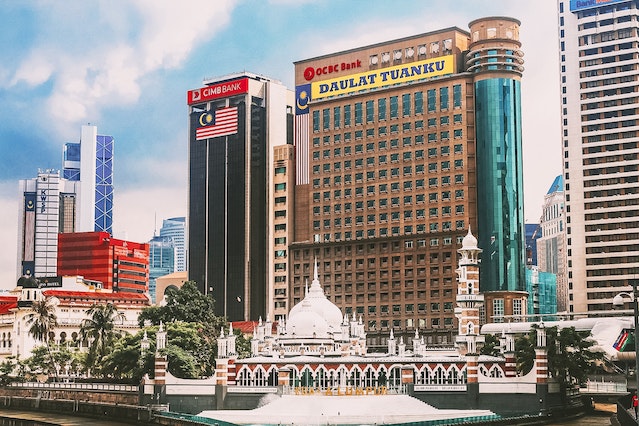
Kuala Lumpur
Kuala Lumpur, often abbreviated as KL, is the capital city of Malaysia and a dynamic metropolis known for its modernity, cultural diversity, and vibrant lifestyle. It’s one of the most prominent cities in Southeast Asia and offers a wide range of attractions and amenities. Here’s an overview of Kuala Lumpur:
Cultural Diversity: Kuala Lumpur is a melting pot of cultures, with influences from the Malay, Chinese, Indian, and indigenous communities. This diversity is reflected in its food, festivals, and traditions. The city’s residents come from various ethnic backgrounds, creating a harmonious blend of cultures.
Cityscape: The city boasts a modern skyline with iconic landmarks such as the Petronas Twin Towers, which were the tallest buildings in the world when completed. The towers remain a symbol of Kuala Lumpur’s progress and prosperity. Other notable buildings include the KL Tower and Merdeka Square.
Food Paradise: Kuala Lumpur is renowned for its diverse and flavorful cuisine. You can explore street food markets, hawker stalls, and upscale restaurants offering a wide range of dishes, from nasi lemak to dim sum, roti canai, and satay. Jalan Alor and Petaling Street are popular food streets.
Cultural Landmarks: The city is home to various cultural landmarks, including the Sultan Abdul Samad Building, Jamek Mosque, and Sri Mahamariamman Temple. These sites showcase the city’s rich history and architectural heritage.
Shopping: Kuala Lumpur offers a plethora of shopping options, from upscale malls like Suria KLCC and Pavilion KL to traditional markets like Central Market and Chinatown’s Petaling Street. The city is a shopping haven for fashion, electronics, and souvenirs.
Parks and Green Spaces: Despite its urban sprawl, Kuala Lumpur has several parks and green spaces. KLCC Park, located near the Petronas Towers, is a popular place for jogging and relaxation. The Perdana Botanical Gardens and Bukit Bintang’s Pavilion Park are also worth exploring.
Transportation: Kuala Lumpur has an efficient public transportation system, including a network of trains (LRT, MRT, and monorail), buses, and taxis. The city’s transportation infrastructure makes it easy to navigate and explore.
Entertainment: The city offers a vibrant nightlife scene with bars, clubs, and live music venues. The Golden Triangle area is known for its nightlife attractions. Cultural performances, theaters, and art galleries also contribute to the city’s entertainment options.
Healthcare: Kuala Lumpur has modern healthcare facilities and hospitals that cater to both residents and expatriates. Medical tourism is a growing industry in Malaysia, with top-quality medical services available at competitive prices.
Education: The city has a variety of international schools and universities, making it suitable for families with children.
Retirement: While Kuala Lumpur is often associated with a bustling urban lifestyle, it can still be a retirement destination for those who prefer the conveniences of a big city. The city offers a range of accommodation options, a welcoming expatriate community, and access to quality healthcare.
When considering retirement in Kuala Lumpur or an extended stay, it’s essential to understand visa requirements and regulations for retirees in Malaysia, such as the Malaysia My Second Home (MM2H) program. Consulting with MM2H agents and local authorities can provide valuable guidance for planning your retirement in Kuala Lumpur or elsewhere in Malaysia
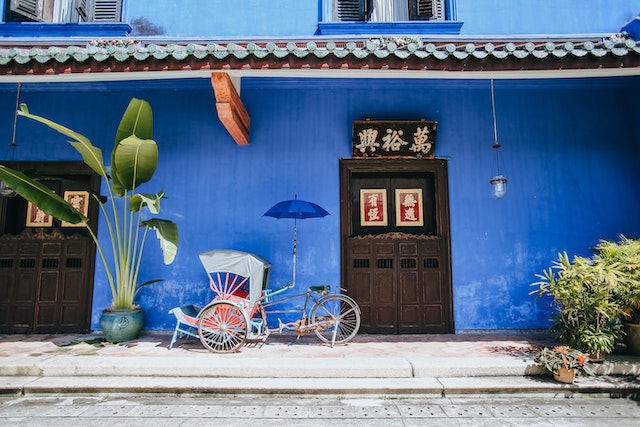
Ipoh
Ipoh is the capital city of the state of Perak in Malaysia. It’s known for its historical charm, colonial architecture, and delicious street food. Ipoh is often considered one of Malaysia’s hidden gems and has gained popularity among tourists and retirees alike. Here’s an overview of Ipoh:
Historical Significance: Ipoh has a rich history, and it was once one of the wealthiest cities in Southeast Asia during the tin mining boom in the late 19th and early 20th centuries. You can still see remnants of its colonial past in the form of well-preserved architecture.
Old Town: Ipoh’s Old Town is a treasure trove of historical buildings, including banks, government offices, and shophouses. Many of these structures feature beautiful facades with intricate details. Strolling through the Old Town is like stepping back in time.
Street Art: Like George Town in Penang, Ipoh has embraced street art to enhance its cultural appeal. You’ll find murals and installations by local and international artists adorning the walls of buildings in the Old Town area.
Food: Ipoh is famous for its street food. Some of the must-try dishes include Ipoh hor fun (flat rice noodles in chicken broth), bean sprout chicken rice, tau fu fah (tofu pudding), and salt-baked chicken. The city is a haven for food enthusiasts.
Cave Temples: Ipoh is home to several impressive cave temples, including Perak Cave Temple and Kek Lok Tong Cave Temple. These temples are set in natural limestone caves and offer a serene and spiritual atmosphere.
Boutique Cafes: In recent years, Ipoh has seen the emergence of boutique cafes and artisanal shops. These establishments have contributed to the city’s revival and have become popular spots for locals and tourists.
Lakes and Parks: The city has scenic lakes and parks where you can enjoy leisurely walks and picnics. The picturesque Tasik Cermin (Mirror Lake) is one such spot, known for its glassy surface that reflects the surrounding limestone hills.
Hiking and Nature: Ipoh is surrounded by limestone hills and lush greenery, making it a great base for outdoor enthusiasts. You can explore hiking trails and caves in the nearby Kek Lok Tong Geological Park and Gunung Lang Recreational Park.
Transportation: Ipoh is well-connected by road and rail. The city has a train station with services to Kuala Lumpur and other major cities. It’s also accessible by bus.
Retirement: Ipoh offers a relaxed pace of life compared to larger cities like Kuala Lumpur. Its lower cost of living and tranquil environment make it an attractive destination for retirees seeking a peaceful lifestyle with access to cultural attractions and natural beauty.
When considering retirement in Ipoh or an extended stay, it’s important to understand visa requirements and regulations for retirees in Malaysia, such as the Malaysia My Second Home (MM2H) program. Consulting with MM2H agents and local authorities can provide valuable guidance for planning your retirement in Ipoh or elsewhere in Malaysia
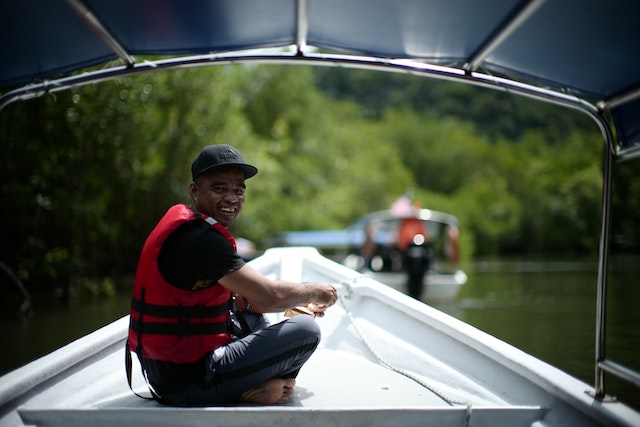
Langkawi
Langkawi is an archipelago located on the northwest coast of Malaysia, near the border with Thailand. It’s known for its stunning natural beauty, pristine beaches, and a laid-back atmosphere. Langkawi is a popular destination for tourists, retirees, and expatriates. Here’s an overview of Langkawi:
Island Paradise: Langkawi is often referred to as the “Jewel of Kedah” and is known for its beautiful beaches, crystal-clear waters, and lush rainforests. The main island of Langkawi and its surrounding islets offer a range of natural attractions.
Duty-Free Zone: Langkawi is a duty-free zone, making it an attractive destination for shoppers looking for tax-free goods such as alcohol, cigarettes, and electronics.
Pristine Beaches: The island boasts several pristine beaches, including Pantai Cenang, Pantai Tengah, Pantai Kok, and Datai Bay. These beaches are perfect for sunbathing, swimming, and water sports.
Mangrove Forests: Langkawi is home to extensive mangrove forests, and you can take boat tours to explore these unique ecosystems. The Kilim Karst Geoforest Park is a popular choice for such tours.
Cable Car and Sky Bridge: The Langkawi Cable Car takes visitors to the top of Gunung Mat Cincang, providing panoramic views of the surrounding islands and the Andaman Sea. The Langkawi Sky Bridge, one of the world’s longest curved suspension bridges, offers breathtaking views.
Water Sports: Langkawi offers a variety of water sports, including snorkeling, scuba diving, parasailing, jet skiing, and sailing. The calm waters of the Andaman Sea make it a great place for aquatic activities.
Wildlife: The island is home to diverse wildlife, including monkeys, eagles, and a variety of bird species. Wildlife enthusiasts can visit the Langkawi Wildlife Park and the Langkawi Bird Paradise.
Island Hopping: Langkawi is a gateway to exploring other nearby islands, including Pulau Payar Marine Park, which is known for its excellent snorkeling and diving opportunities.
Accommodation: The island offers a range of accommodation options, from luxury resorts and boutique hotels to budget-friendly guesthouses. There are also long-term rental options for retirees and expatriates.
Relaxed Lifestyle: Langkawi offers a peaceful and relaxed lifestyle, making it a popular destination for retirees. The island’s slower pace, natural beauty, and friendly community contribute to its appeal.
Transportation: Langkawi is accessible by air and sea. Langkawi International Airport connects the island to major Malaysian cities and international destinations. Once on the island, getting around is easy via taxis, rental cars, and scooters.
Retirement: Langkawi’s natural beauty, duty-free status, and serene atmosphere make it an attractive destination for retirees seeking a tranquil environment with access to outdoor activities and a range of amenities.
When considering retirement in Langkawi or an extended stay, it’s essential to understand visa requirements and regulations for retirees in Malaysia, such as the Malaysia My Second Home (MM2H) program. Consulting with MM2H agents and local authorities can provide valuable guidance for planning your retirement in Langkawi or elsewhere in Malaysia
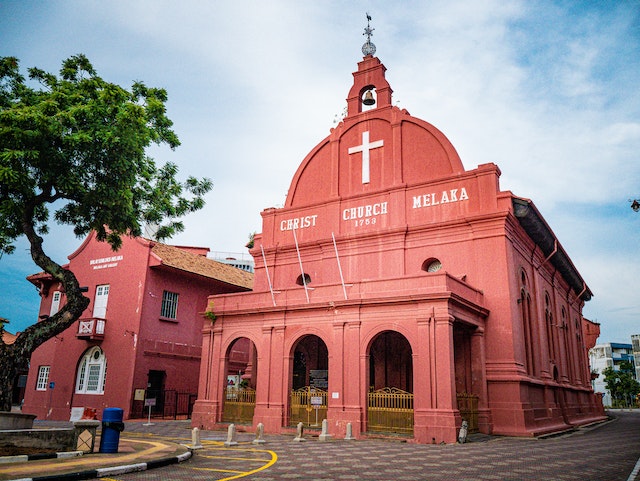
Melaka
Melaka, also spelled Malacca, is a historical city located in the southern region of Peninsular Malaysia. It holds a special place in Malaysian history as it was one of the earliest centers of trade and colonial influence in the region. Today, Melaka is known for its well-preserved historical sites, cultural diversity, and vibrant atmosphere. Here’s an overview of Melaka:
Historical Significance: Melaka was a vital trading port in the 15th century, attracting traders from China, India, and the Middle East. It was the center of the Malay sultanate and later fell under Portuguese, Dutch, and British colonial rule. The city’s history is showcased through its historical sites.
UNESCO World Heritage Site: In 2008, Melaka was designated as a UNESCO World Heritage Site due to its well-preserved heritage buildings, multicultural society, and historical significance.
Colonial Architecture: The city is famous for its colonial-era architecture, including Portuguese, Dutch, and British buildings. Notable sites include St. Paul’s Hill, A Famosa fortress, Christ Church, and Dutch Square.
Jonker Street: Jonker Street (Jalan Hang Jebat) is the heart of Melaka’s Chinatown and a bustling hub for food, shopping, and cultural experiences. It’s known for its night market, antique shops, and street food stalls.
Cultural Diversity: Melaka is a melting pot of cultures, with influences from the Malay, Chinese, Indian, Portuguese, Dutch, and British communities. This cultural diversity is reflected in its architecture, festivals, and cuisine.
Food: Melaka is renowned for its diverse and flavorful cuisine. You can savor local dishes like chicken rice balls, Nyonya laksa, satay celup, and Portuguese-influenced dishes like devil’s curry.
River Cruises: Melaka River flows through the city, and taking a river cruise is a popular way to explore its historical and cultural landmarks. The boat tours provide unique views of the city’s architecture.
Museums: Melaka has several museums, including the Melaka Sultanate Palace Museum, Maritime Museum, and Baba Nyonya Heritage Museum, which offer insights into the city’s history and heritage.
Temples and Mosques: The city is home to various temples and mosques, including Cheng Hoon Teng Temple, Kampung Kling Mosque, and St. Peter’s Church.
Accommodation: Melaka offers a range of accommodation options, from boutique hotels housed in historical buildings to modern resorts and budget-friendly guesthouses.
Transportation: Melaka is easily accessible by road from major Malaysian cities like Kuala Lumpur and Singapore. Once in the city, you can get around on foot or by bicycle. Local buses and taxis are also available.
Retirement: Melaka’s historical charm, relaxed atmosphere, and cultural richness make it an appealing destination for retirees seeking a unique and culturally enriching retirement experience.
When considering retirement in Melaka or an extended stay, it’s important to understand visa requirements and regulations for retirees in Malaysia, such as the Malaysia My Second Home (MM2H) program. Consulting with MM2H agents and local authorities can provide valuable guidance for planning your retirement in Melaka or elsewhere in Malaysia
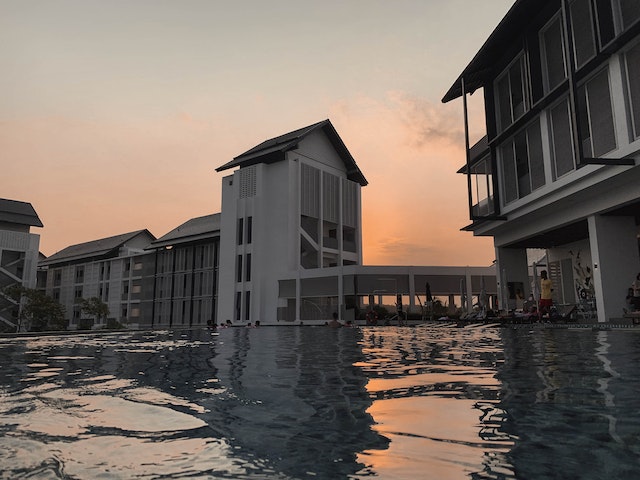
Johor Bahru
Johor Bahru, often abbreviated as JB, is the capital city of the state of Johor in Malaysia. It is located in the southern part of Peninsular Malaysia, just across the border from Singapore. Johor Bahru is known for its proximity to Singapore, making it a popular destination for both travelers and expatriates. Here’s an overview of Johor Bahru:
Proximity to Singapore: Johor Bahru is situated right across the Johor-Singapore Causeway from Singapore, making it an attractive option for those who want easy access to Singapore’s amenities, job opportunities, and healthcare services while benefiting from Malaysia’s lower cost of living.
Economic Hub: Johor Bahru is an economic hub in its own right, with a growing industrial and commercial sector. It hosts a number of manufacturing companies, shopping malls, and business districts.
Shopping and Dining: The city boasts several shopping centers, including Johor Bahru City Square, Komtar JBCC, and Paradigm Mall. These malls offer a wide range of shopping, dining, and entertainment options.
Cultural Attractions: Johor Bahru has cultural and historical attractions like the Sultan Abu Bakar Mosque, Istana Besar (Grand Palace), and the Royal Abu Bakar Museum, which provide insights into the state’s history and culture.
Theme Parks: The city is home to popular theme parks like Legoland Malaysia Resort and Hello Kitty Town, making it a family-friendly destination.
Nature and Recreation: Johor Bahru offers parks and recreational areas such as Danga Bay, which has waterfront activities and dining options. You can also enjoy outdoor activities in nearby natural reserves.
Transportation: Johor Bahru is well-connected by road, with excellent connectivity to other parts of Malaysia. The city also has an international airport, Senai International Airport, which offers domestic and regional flights.
Healthcare: The city has modern healthcare facilities and hospitals, making it suitable for retirees and expatriates. Many medical tourists come to Johor Bahru for quality healthcare services.
Education: Johor Bahru has a number of international schools and educational institutions catering to expatriates and locals.
Retirement: Johor Bahru is an option for retirees who want to take advantage of Malaysia’s lower cost of living while staying close to Singapore. The city offers a range of accommodation options, including condominiums and gated communities.
Cultural Diversity: Like much of Malaysia, Johor Bahru is known for its multicultural society, with Malay, Chinese, Indian, and indigenous influences. This diversity is reflected in its festivals and cuisine.
Visa Requirements: When considering retirement in Johor Bahru or any other part of Malaysia, it’s important to understand visa requirements and regulations for retirees, such as the Malaysia My Second Home (MM2H) program. Consulting with MM2H agents and local authorities can provide valuable guidance for planning your retirement in Johor Bahru or elsewhere in Malaysia.
Johor Bahru offers a unique blend of urban amenities, cultural diversity, and proximity to Singapore, making it an appealing destination for those seeking a comfortable and well-connected lifestyle in Southeast Asia
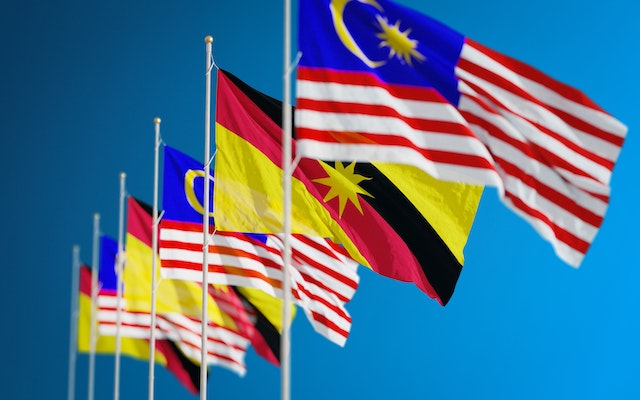
Kuching
Kuching is the capital city of Sarawak, one of the two Malaysian states on the island of Borneo. It’s known for its unique blend of modernity and natural beauty, making it a captivating destination for travelers, expatriates, and retirees. Here’s an overview of Kuching:
Natural Beauty: Kuching is surrounded by lush rainforests, rivers, and mountains, making it a paradise for nature lovers. The city’s name, “Kuching,” means “cat” in Malay, and you’ll find cat statues throughout the city as a symbol of its name.
Culture and Heritage: Kuching embraces its cultural diversity, with influences from indigenous communities, Chinese, Malay, and other ethnic groups. The city is known for its vibrant arts scene, festivals, and traditional longhouses.
Sarawak River: The Sarawak River flows through the heart of Kuching, and a riverside promenade offers beautiful views of the city and the river. You can take a boat ride on the river to explore the surrounding areas.
Historical Sites: Kuching features historical sites like the Sarawak State Museum, which is one of the oldest museums in Borneo, and Fort Margherita, an iconic fortress that dates back to the Brooke dynasty.
Food: Sarawak is known for its unique culinary delights, such as Sarawak laksa, kolo mee (noodles), and kek lapis (layered cakes). You can sample these dishes in local coffee shops and food stalls.
Shopping: The city offers shopping opportunities in its bustling markets and malls. The Main Bazaar is famous for its antiques, crafts, and local products.
Outdoor Activities: Kuching and its surrounding areas are perfect for outdoor activities, including hiking in Bako National Park, visiting Semenggoh Wildlife Centre to see orangutans, and exploring nearby beaches and islands.
Cultural Diversity: Kuching’s cultural diversity is celebrated through various festivals and events, including the Rainforest World Music Festival and the Kuching Festival.
Accommodation: Kuching offers a range of accommodation options, from luxury hotels to budget-friendly guesthouses and homestays.
Education: The city is home to several educational institutions, including international schools and the University of Malaysia Sarawak (UNIMAS).
Healthcare: Kuching has modern healthcare facilities and hospitals, ensuring access to quality medical services for residents and expatriates.
Retirement: Kuching is an attractive destination for retirees seeking a peaceful and nature-oriented lifestyle. The city’s lower cost of living, friendly community, and cultural richness make it appealing for those looking for an alternative to urban retirement.
